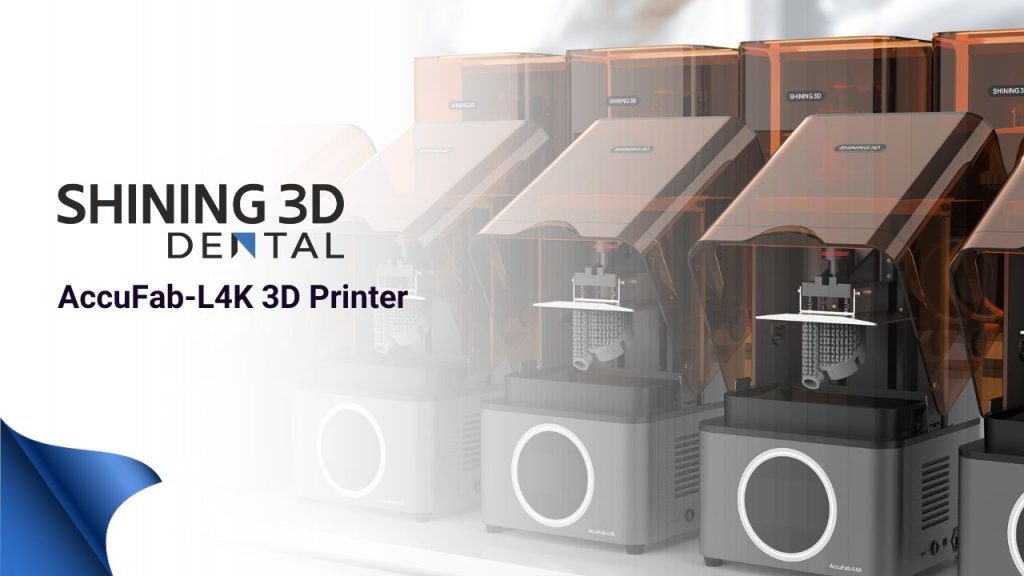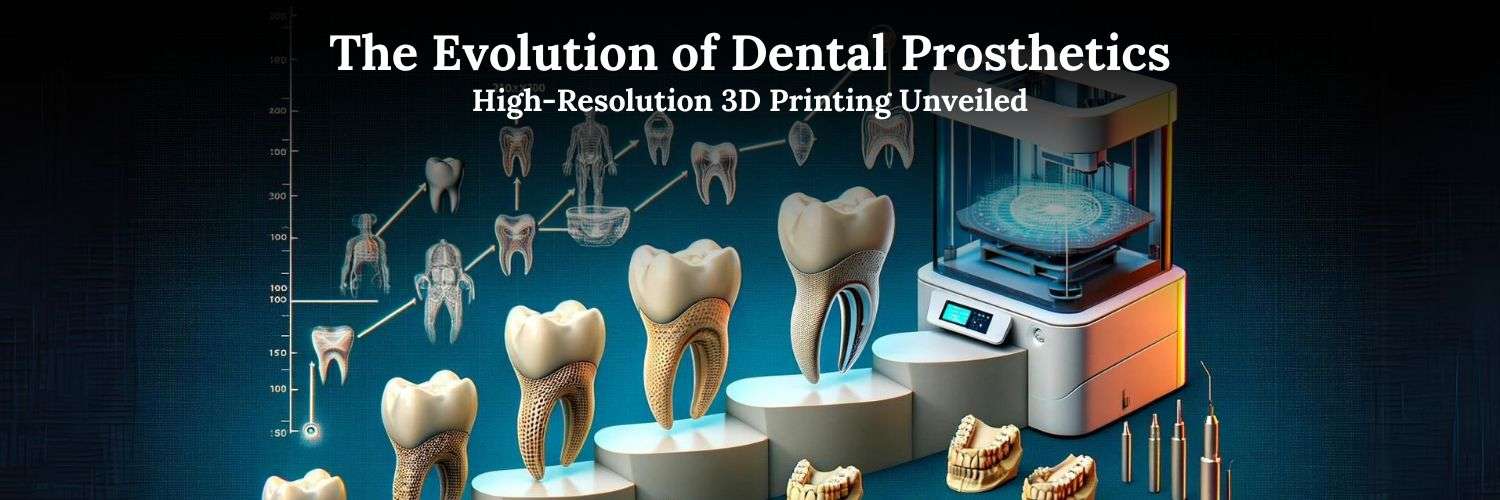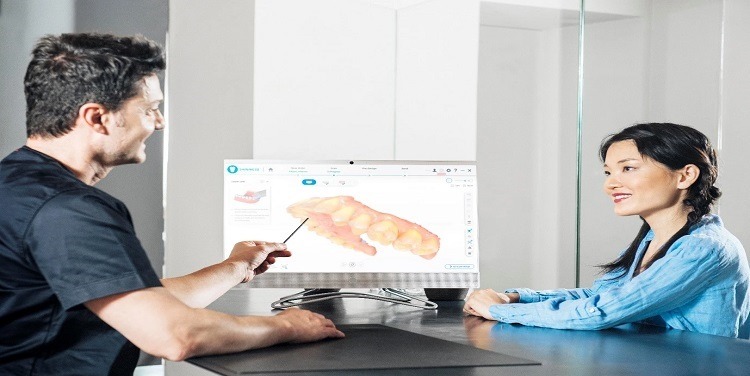The Evolution of Dental Prosthetics: High-Resolution 3D Printing Unveiled
The realm of dental prosthetics is undergoing a revolutionary shift, thanks to the advent of high-resolution 3D printing technology. This groundbreaking innovation is transforming the landscape of dental medicine, offering unprecedented advancements in the design and production of dental prosthetics. High-resolution 3D printing is not just a technological novelty; it is a pivotal development that enhances the capabilities of dental professionals in creating prosthetics with remarkable precision and customization.
This innovation heralds a new era in the fabrication of dental prosthetics. Traditional methods, while effective, often involve time-consuming processes and limitations in customization and precision. High-resolution 3D printing technology, on the other hand, enables the production of dental prosthetics that are tailored to the unique anatomical features of each patient, ensuring a perfect fit, enhanced comfort, and improved aesthetic outcomes. From intricate dental models to complex orthodontic appliances, 3D printing technology is setting new standards for quality and efficiency in dental prosthetic fabrication.
The introduction of chairside 3D printers and digital dentistry equipment into dental practices and labs is redefining the boundaries of what is possible in dental care. These advancements not only streamline the production process but also open up new possibilities for patient care, offering solutions that were once deemed too complex or impossible. The ability to produce dental prosthetics on-demand reduces waiting times, accelerates treatment processes, and significantly improves the patient experience.
In this new frontier of dental aesthetics, high-resolution 3D printing technology stands as a testament to the incredible potential of digital innovation in enhancing the practice of dentistry. As we delve deeper into the impact of this technology, it becomes clear that its contributions to dental prosthetics are not just transformative; they are reshaping the future of dental care, making it more personalized, precise, and accessible than ever before.

The Rise of 3D Printing in Dentistry
Tracing the History and Development of 3D Printing Technology within the Dental Industry
The journey of 3D printing technology in the dental industry is a tale of rapid innovation and transformation. Initially conceptualized in the 1980s, 3D printing, also known as additive manufacturing, began to gain traction across various sectors for its ability to create complex structures layer by layer with precision. In dentistry, the adoption was gradual, starting in the late 1990s and early 2000s when dental professionals began exploring the potential of 3D printing for creating dental models and certain types of prosthetics. The technology’s promise for customization and efficiency sparked interest, setting the stage for a new era in dental fabrication.
The Transition from Traditional Dental Lab Techniques to the Adoption of Chairside 3D Printers and Digital Dentistry Equipment
The transition from traditional dental lab techniques to 3D printing represents a significant shift in how dental prosthetics are created. Traditional methods involved manual craftsmanship, which, while skilled, was time-consuming and prone to errors. The introduction of chairside 3D printers revolutionized this process, allowing dental professionals to produce dental models, crowns, bridges, and even complete dentures with unprecedented speed and accuracy.
Digital dentistry equipment, including CAD/CAM (Computer-Aided Design and Computer-Aided Manufacturing) systems, became integral to this new workflow. These systems enable the digital design of prosthetics, which are then brought to life through 3D printing directly in the dental office. This not only shortens the production time but also enhances the precision of the final product, ensuring a perfect fit and more natural-looking results.
The adoption of 3D printing technology in dentistry has led to significant advancements in personalized care. Custom dental appliances, orthodontic solutions, and even surgical guides for implant placement can now be produced quickly and tailored to the individual needs of each patient. This shift towards digital workflows has opened up new possibilities for treatment planning and execution, making dental care more efficient, accurate, and patient-centric.

Key Technologies Behind Dental 3D Printers
Exploring the Technical Foundations of Dental 3D Printers
Dental 3D printers stand at the intersection of innovation and precision, powered by the principles of additive manufacturing. This advanced technology operates by layering materials, such as resin or metal, to create objects from digital models. Unlike traditional manufacturing that often requires cutting away material, additive manufacturing builds the product layer by layer, which can significantly reduce waste and allow for more complex geometries. In the context of dentistry, this means being able to produce dental models, prosthetics, and even surgical guides with intricate details that closely match the patient’s anatomy.
The Role of Additive Manufacturing
Additive manufacturing in dentistry relies on several key techniques, with stereolithography (SLA) and digital light processing (DLP) among the most common for producing high-resolution models and prosthetics. SLA printers use a laser to cure liquid resin into hardened plastic, layer by layer, based on the 3D design. DLP technology, similarly, uses a digital light projector to flash a single image of each layer all at once, curing the resin. These technologies offer the precision needed for dental applications, enabling the creation of devices that fit perfectly and function optimally within the unique confines of a patient’s oral cavity.
Significance of CAD/CAM Dentistry
The integration of CAD/CAM (Computer-Aided Design and Computer-Aided Manufacturing) systems is a pivotal aspect of modern dental 3D printing. CAD software allows dental professionals to design virtual models of dental prosthetics or restorations with great accuracy. CAM, on the other hand, takes these digital designs and turns them into physical objects through the 3D printer. This process not only streamlines the production of dental appliances but also opens up new possibilities for customization and patient care.
CAD/CAM dentistry has revolutionized how dental prosthetics are designed and produced, offering a level of precision and efficiency that was previously unattainable. The ability to design and print high-resolution dental models, crowns, bridges, and even full dentures in-house significantly reduces the turnaround time for dental restorations and increases the convenience for the patient. Furthermore, it enhances the dental professional’s ability to tailor treatments to the specific needs and preferences of their patients, improving outcomes and patient satisfaction.

Advantages of 3D Printed Dental Prosthetics
The advent of 3D printing technology in the dental field, particularly with advancements like the Shining 3D AccuFab L4K 3D Printer, has revolutionized the creation of dental prosthetics. This innovative approach to dental manufacturing brings a plethora of benefits that significantly enhance the practice of dentistry and the patient experience.
Enhanced Precision and Customization
The Shining 3D AccuFab L4K stands out for its ability to produce dental prosthetics with exceptional detail and accuracy. Thanks to its high-resolution printing capabilities, dental professionals can fabricate prosthetics that match the intricate anatomical features of each patient’s dental and gingival structures. This precision ensures a superior fit, comfort, and functionality of dental appliances, directly contributing to more successful treatment outcomes.
Faster Production Times
One of the most significant advantages provided by the Shining 3D AccuFab L4K is the reduction in production times. Traditional methods of crafting dental prosthetics can be labor-intensive and time-consuming. In contrast, 3D printing streamlines the manufacturing process, allowing for the rapid production of dental models, crowns, bridges, and even complete dentures. This efficiency not only optimizes dental lab operations but also means patients can receive their custom dental appliances much faster, reducing wait times and improving the overall treatment timeline.
Improved Patient Outcomes
The use of 3D printed dental prosthetics has a direct impact on patient outcomes. The customizability and precision of 3D printing allow for more accurate restorations that not only look more natural but also function better. Patients benefit from dental appliances that integrate seamlessly with their natural teeth, enhancing both aesthetics and oral health. Moreover, the speed of 3D printing technologies like the AccuFab L4K ensures that patients have access to necessary dental interventions promptly, preventing further dental issues and contributing to faster recovery times.
Case Study: Orthodontic Solutions with AccuFab L4K
A compelling demonstration of the impact of 3D printing in dentistry can be seen in orthodontic treatment planning and appliance fabrication. For instance, using the Shining 3D AccuFab L4K, a dental practice was able to custom-design and print a series of orthodontic aligners tailored to the patient’s specific dental alignment needs. The process from digital scanning to aligner fabrication was streamlined, with each aligner fitting perfectly to facilitate effective treatment. This case highlights not only the technological capabilities of the AccuFab L4K but also its practical application in providing personalized orthodontic solutions that meet the unique needs of patients.

Integration with Orthodontic and Restorative Dentistry
Examining the Integration of 3D Printing Technology
The integration of 3D printing technology into orthodontic and restorative dentistry has significantly streamlined and enhanced treatment workflows. This technology allows dental professionals to create detailed models and custom appliances directly from digital impressions, ensuring a level of precision and efficiency previously unattainable. In orthodontics, 3D printing is used to fabricate clear aligners, retainers, and even indirect bonding trays for braces, making the treatment process faster and more patient-friendly. In restorative dentistry, practitioners leverage 3D printing to produce crowns, bridges, veneers, and even full dentures with remarkable accuracy, directly impacting the quality of patient care.
Simplifying Complex Dental Procedures
The ability to produce accurate 3D printed models and appliances has simplified many complex dental procedures. For orthodontic treatments, 3D printed models provide a clear and precise foundation for planning and executing treatment strategies, allowing orthodontists to predict movement patterns and outcomes more accurately. This precision is crucial for designing effective clear aligners and customizing orthodontic appliances that fit the patient’s anatomy perfectly.
In restorative dentistry, 3D printing aids in the fabrication of dental prosthetics that precisely match the patient’s existing teeth in terms of shape, color, and fit. This not only ensures that the restorative work is aesthetically pleasing but also contributes to the overall functionality and longevity of the prosthetics. Moreover, the use of 3D printed surgical guides has revolutionized dental implant procedures, enabling dentists to place implants with unprecedented accuracy, thus reducing risks and improving success rates.
Ensuring Accurate Treatment Planning
The precision of 3D printing technology plays a pivotal role in accurate treatment planning. By providing detailed and accurate representations of the patient’s oral cavity, 3D printed models allow dental professionals to meticulously plan treatments, anticipate potential challenges, and adjust their strategies accordingly. This level of detail ensures that both orthodontic and restorative treatments are not only effective but also minimally invasive, improving patient experiences and outcomes.
The Future of Dental Lab Technology and Prosthetics
The landscape of dental lab technology and prosthetics is on the brink of a new era, fueled by continuous advancements in 3D printing technology. As we look towards the future, the potential for further innovation holds promise for transforming every aspect of dental prosthetic creation, from enhancing precision to revolutionizing efficiency and customization.
Anticipated Advancements in 3D Printing Technology
Future developments in 3D printing technology are expected to push the boundaries of what’s currently possible in dental prosthetics. Innovations may include even higher resolution printers capable of capturing microscopic details, faster printing speeds without sacrificing quality, and the use of a broader range of biocompatible materials. These advancements could lead to the production of dental prosthetics that are not only more precise and natural-looking but also stronger and more durable.
Moreover, the integration of artificial intelligence (AI) with 3D printing technology could automate certain aspects of the design and manufacturing process, making it easier for dental professionals to create prosthetics tailored to the specific needs of their patients. This could significantly reduce the time and expertise required to produce complex dental appliances, making high-quality prosthetics more accessible to a wider patient population.
The Potential Implications for Dental Lab Technology
The implications of these advancements for dental lab technology are profound. Labs equipped with next-generation 3D printers and AI-driven design software will be able to operate more efficiently, reducing turnaround times for dental appliances and lowering costs. This increase in efficiency could enable dental labs to handle a larger volume of orders, potentially expanding access to custom dental prosthetics for patients around the world.
Additionally, the ability to print with a wider variety of materials could open up new possibilities for patient care, such as prosthetics designed for enhanced biocompatibility or with embedded functionalities, like drug delivery systems for treating oral health conditions directly.
Predictions for Customization and Patient Care
As 3D printing technology continues to evolve, the degree of customization available for dental prosthetics will reach unprecedented levels. Patients could expect prosthetics that are not just customized to fit their dental anatomy but also designed to match their aesthetic preferences and functional needs. This level of personalization will not only improve patient satisfaction but also contribute to better clinical outcomes.
Conclusion
he advent and integration of high-resolution 3D printing technology have marked a significant milestone in the evolution of dental prosthetics. This groundbreaking innovation has not only redefined what is possible within the realm of dental practice but has also set a new benchmark for precision, efficiency, and patient satisfaction. By enabling the production of dental prosthetics with unparalleled accuracy and speed, 3D printing technology has transformed the landscape of dental care, making treatments more accessible, customizable, and effective than ever before.
The transformative impact of this technology extends beyond the mere fabrication of dental appliances. It heralds a new era of digital dentistry, where the boundaries between dental practice and technological innovation continue to blur, offering new avenues for patient care and treatment modalities. The ability to create detailed dental models and custom appliances in-house not only streamlines the workflow within dental practices but also significantly enhances the quality of care delivered to patients.
As we look to the future, the importance of embracing digital advancements in dentistry cannot be overstated. The ongoing evolution of 3D printing technology promises to further refine the precision, efficiency, and customization of dental prosthetics, paving the way for even more innovative solutions in patient care. Dental professionals who adopt and adapt to these digital advancements will find themselves at the forefront of a rapidly changing industry, equipped to meet the evolving needs and expectations of their patients.





Leave a comment